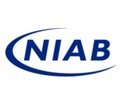Researchers from the UK crop research organisation Niab and Nanjing Agricultural University in China, together with international partners, have developed a new system called OrchardQuant 3D. The pipeline combines aerial and ground-based data from drones and LiDAR sensors to generate three-dimensional models of fruit trees.
The system measures traits such as tree height, crown volume, branch structure, and blossom density, which are important for fruit yield and quality. It has been tested in pear orchards in China and apple orchards at Niab in the UK. The method allows scalable 3D mapping and automated analysis, processing data for tens to thousands of trees.
 © NIAB
© NIAB
The technology enables the measurement of tree characteristics that traditionally required weeks of manual assessment. These include counting blossoms, fruitlets, and fruit, as well as measuring canopy size and structure. The information can be used for agronomic decisions such as thinning and pruning, and for creating prescription maps for variable rate spraying.
Dr Charles Whitfield, Niab crop protection specialist, said, "This innovation addresses a critical bottleneck in horticulture: phenotyping at scale. Traditional methods are labour-intensive and often unable to keep pace with modern orchard systems or changing environmental conditions. By combining colour and spatial data, OrchardQuant 3D provides actionable insights for breeding, management, and research."
The codebase has been released as open access for use by researchers and growers. Planned developments include integration of yield prediction, disease monitoring, and advanced decision support. At present, the tool is being used for research purposes, but it may become more widely available.
 © NIAB
© NIAB
The system is also intended to support breeding by quantifying tree traits more precisely, assisting in the development of new varieties suited to climate and production system changes.
Professor Ji Zhou, who led the Niab team in the UK, said the research shows that high precision mapping of complex 3D structures can be achieved at an orchard scale. He added that it could contribute to improving data for orchard management and breeding.
Dr Rob Jackson, deputy programme leader for crop phenotyping at Niab, carried out the drone mapping in the UK. He said the study showed how much information could be collected by a single drone operator with a small data processing team.
The research formed part of the Precision Orchard Management and Environment (POME) project, funded by Defra and Innovate UK. Niab will use the output to support breeding and other work in the UK horticultural sector.
 © NIABFor more information:
© NIABFor more information:
Dr Charles Whitfield
Niab
Tel: +44 (0)1732 523729
Email: [email protected]
www.niab.com
